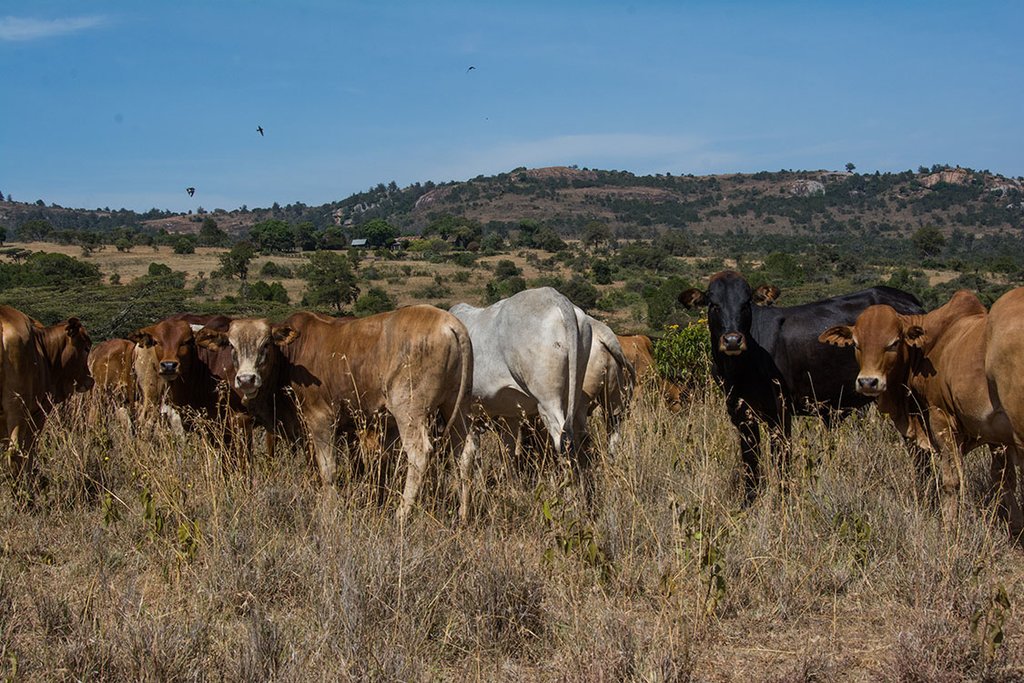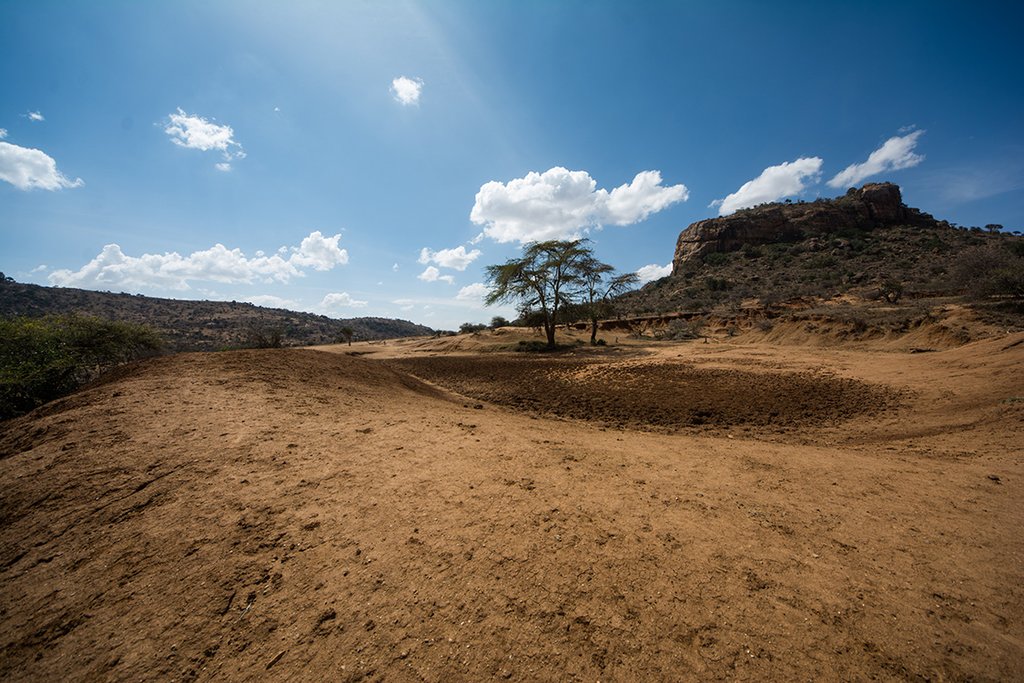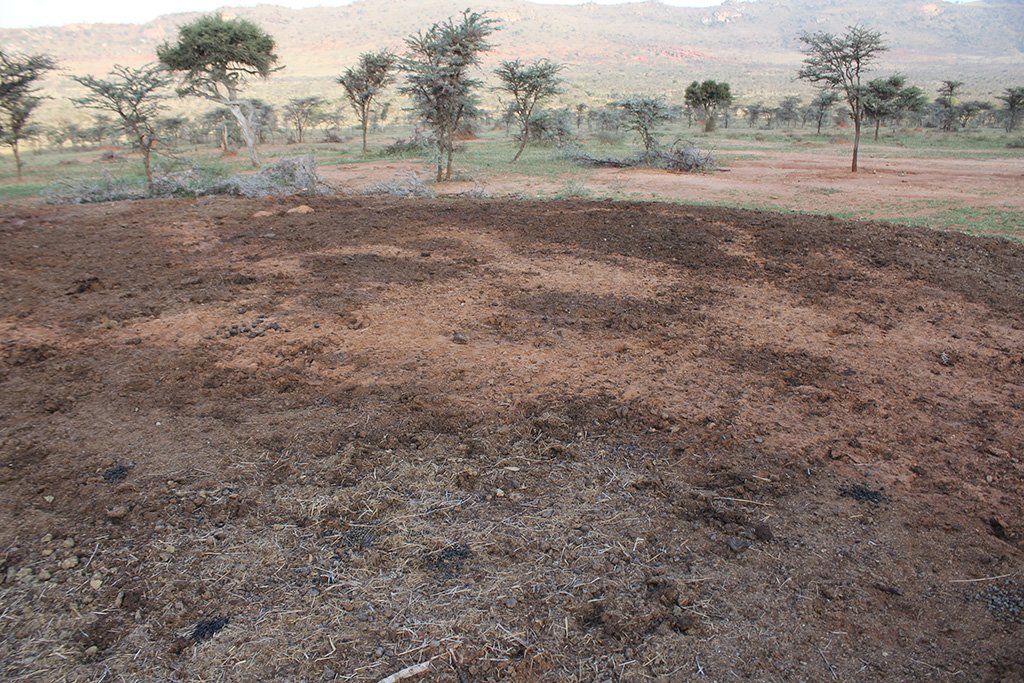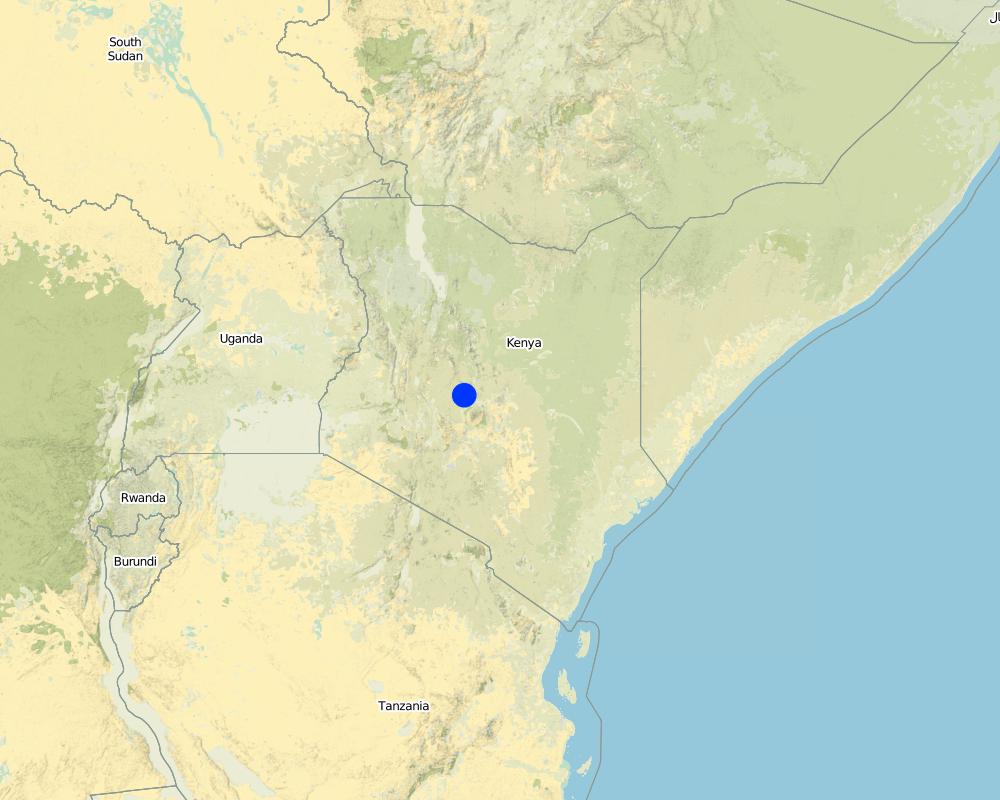Lolldaiga Hills Ranch: Rotational Grazing and Boma-Based Land Reclamation [كينيا]
- تاريخ الإنشاء:
- تحديث:
- جامع المعلومات: Michael Herger
- المحرر: –
- المراجعون: Donia Mühlematter, Hanspeter Liniger, Rima Mekdaschi Studer, Alexandra Gavilano
technologies_2982 - كينيا
- Lolldaiga Hills Ranch: Rotational Grazing and Boma-Based Land Reclamation : 3 سبتمبر، 2018 (inactive)
- Lolldaiga Hills Ranch: Rotational Grazing and Boma-Based Land Reclamation: 4 سبتمبر، 2019 (inactive)
- Lolldaiga Hills Ranch: Rotational Grazing and Boma-Based Land Reclamation: 2 نوفمبر، 2021 (public)
- Lolldaiga Hills Ranch: Rotational Grazing and Boma-Based Land Reclamation : 22 فبراير، 2018 (inactive)
- Lolldaiga Hills Ranch: Rotational Grazing and Boma-Based Land Reclamation : 1 فبراير، 2018 (inactive)
عرض الأقسام
توسيع الكل طي الكل1. معلومات عامة
1.2 تفاصيل الاتصال بالأشخاص الرئيسيين لمصدر المعلومات والمؤسسات المشاركة في تقييم وتوثيق التقنية
الشخص (الأشخاص) الرئيسي لمصدر المعلومات
مستخدم الأرض:
Tomlinson Lance
Lolldaiga Hills Ltd.
كينيا
1.3 الشروط المتعلقة باستخدام البيانات الموثقة من خلال WOCAT
يوافق جامع المعلومات والشخص (لاشخاص) الرئيسي لمصدر المعلومات على الشروط المتعلقة باستخدام البيانات الموثقة من خلال WOCAT:
نعم
1.4 إعلان بشأن استدامة التقنية الموصوفة
هل التقنية الموصوفة هنا تمثل مشكلة فيما يتعلق بتدهور الأراضي، بحيث لا يمكن إعلانها تقنية مستدامة لإدارة الأراضي؟:
كلا
2. وصف تقنيةالإدارة المستدامي للأراضي
2.1 وصف مختصر للتقنية
تعريف التقنية:
Lolldaiga Hills ranch is a private ranch and conservancy with livestock production and tourism. Rotational grazing is used to manage livestock on semi-arid lands with limited water resources. Bare land is recovered by a "Boma” technology – strategic corralling of animals overnight on degraded land.
2.2 وصف تفصيلي للتقنية
الوصف:
Livestock production on Lolldaiga Hills ranch is managed under an extensive grazing system for dairy, beef, sheep and camel production, with strategic fattening and selling, in harmony with conservation principles. The conservancy is dedicated to the sustainable conservation of critical habitat and wildlife. The ranch serves also as a training ground for the British Army.
Grazing is managed without fixed blocks. Grazing areas vary considerably, depending on rainfall and location within the farm. Similarly, grazing duration in one area also varies significantly (from two weeks to eight months). Starting after the long rains (April to May), livestock are moved gradually from north to south: movement only occurs when areas are completely grazed. They stay for about four months in the north and eight months in the south - due to better grass in the southern part. Some of the dry season grazing is land set aside for later use. They use, for instance, highland forests in the west where zebra and other livestock are largely absent. During the rains, grazing takes place on a much smaller area than during the dry season, where water can be a major challenge. Livestock are kept together, though steers/heifers/breeding cows/resting bulls are separated into different herds of 90-150 units per herd. But these are not tightly “bunched” as in other ranches in the area which apply “Holistic Management” principles, since bunching is not appropriate due to strong wind erosion. The closer livestock are aggregated, the more damage – that is dust generated - in dry areas. As is typical of private ranches in Laikipia, Lolldaiga supports some of the highest densities of wildlife in Kenya. The wild herbivore biomass density on private ranches is estimated by Georgiadis (2007) at 14 ha /TLU.
Whilst the livestock is moving, large bomas (corrals in Kiswahili) are constructed for the herds. Here, animals are closely together kept in protective enclosures overnight. Bomas are strategically sited on bare areas to recover the land through dung accumulation and breaking soil crusts by hooves. Currently, there are 20 bomas covering an area of 0.02 km2 (0.01% of their land). This can be taken to represent the area that can be restored each year. Boma sites are steadily but slightly shifted. On average, one boma is located on the same denuded patch for only one to two weeks during the dry season, and again for one week during the wet season.
In a single boma of 0.1 ha, 400 cows are corralled. Former bare patches with bomas have recovered well after just a few years. Results of a boma site comparison (see Herger 2018) have shown how bomas turn into ecological hotspots with a long-lasting effect. Amounts of soil organic carbon (SOC), as well as macro- and micronutrients in topsoil (especially) and subsoil of former boma sites were much higher than reference sites close-by. The chronology of former boma sites (1, 5, 9 years ago) also played a decisive role in soil parameters. Former boma sites from 5 and 9 years ago performed better than the most recent boma (1 year ago).
On the ranch, due to lack of rains, fodder supplements had to be purchased in 2016. However, it is usually water and not grazing that is the limiting factor on the rangeland.
Whereas cattle are sold to the leading meat producer "Farmer's Choice" (80% for domestic distribution, 20% for export to neighbouring countries and the Middle East), sheep are sold to East African Seafood (Nairobi) and camels to Somalis in town and local butcheries.
Lolldaiga also assists community grazing. The ranch helps neighbouring group ranches by allowing them access to their land for fattening purposes, but mostly as a grass bank during droughts (sometimes charging a small fee, sometimes none). During dry spells, they host on average 500-1000 heads from other communities. Along their fence informal (strictly "illegal") grazing of goats and sheep is tolerated.
2.3 صور التقنية
2.5 البلد/المنطقة/المواقع التي تم تنفيذ التقنية فيها والتي يغطيها هذا التقييم
البلد:
كينيا
المنطقة/الولاية/المحافظة:
Laikipia
حدد انتشار التقنية:
- منتشرة بالتساوي على مساحة
إذا كانت التقنيةا موزعة بالتساوي على منطقة ما، حدد المساحة المغطاة (بالكيلومتر المربع):
200,0
إذا كانت المساحة الدقيقة غير معروفة، فيرجى الإشارة إلى المنطقة التقريبية المغطاة:
- 1,000-100 كم2
التعليقات:
Lolldaiga has an area size of 200 km2. Similar technologies are also applied on other ranches (see the documentations for "Il Ngwesi", "Makurian", and "Borana")
Map
×2.6 تاريخ التنفيذ
في حالة عدم معرفة السنة بالتحديد، يرجى الإشارة إلى التاريخ التقريبي:
- منذ 10-50 سنة
2.7 إدخال التقنية
حدد كيف تم إدخال التقنية:
- من خلال ابتكار مستخدمي الأراضي
3. تصنيف تقنية الإدارة المستدامي للأراضي
3.1 الغرض الرئيسي ( الأغراض الرئيسية) للتقنية
- تحسين الإنتاج
- الحد من تدهور الأراضي ومنعه وعكسه
- الحفاظ على النظام البيئي
- الحفاظ على/تحسين التنوع البيولوجي
3.2 نوع (أنواع) استخدام الأراضي الحالية حيث يتم تطبيق التقنية

أراضي الرعي
الرعي الواسع النطاق:
- مربى ماشية محدد
نوع الحيوان:
- الجمال
- الأغنام
- cattle
المنتجات والخدمات:
- اللحوم
- الحليب
- الصوف
الصنف:
الأغنام
العدد:
1800
الصنف:
الجمال
العدد:
140

المستوطنات والبنية التحتية
- المستوطنات والمباني
ملاحظات:
Few facilities for tourism.
Few farm houses.
التعليقات:
Grassed acacia bushland. Overall rather good vegetation coverage with some patches of bare ground. Especially in the northern part Lolldaiga is effected by the invasive species "Opuntia stricta". Dominant grasses: Pennisetum species, Eragrostis species, Cynadon species, Hyparrhenia species, Kelenger species. Dominant shrubs: Solyneum inconum, Lyceum europaeum, Barleria acuthodies, Grewia tembensis, Opuntia. Dominant trees: Acacia etbaica, Acacia drepanalobium, Acacia mellifera. Detailed list of all species (vegetation and wildlife) available (Herger 2018)
Main animal species and products: Cattle, sheep, camels; Milk, wool, beef, camel meat, and lamb/ mutton. High-quality segment. Domestic (80%, Nairobi and hotels), international distribution (20%, neighbouring countries and the Middle East) Livestock: 3,920 TLU; Stocking rate: 5.1 ha/TLU Pressure on land including wildlife numbers (estimated by Georgiadis 2007): 3.7 ha/TLU Livestock numbers: 5,200 cattle, 1,800 sheep, 140 camels Sales: Cattle 20% sales, Sheep 15%, Camels 10%. Additional 1,000-2,000 livestock units from neighbouring community farms during droughts. Goats and sheep illegally grazing along the fence are tolerated. Wildlife: Giraffe, antelope/gazelle (e.g. gerenuk, impala, Thomson's gazelle), baboons, zebra, dikdik, hares, elephant and others. More wildlife than on group ranches. Wildlife herbivore biomass density (Georgiadis 2007) 14 ha/TLU
Number of growing seasons per year: 2
Short rains in November and December. Long rains in April and May. Rains from (October) November to December are usually better in this area. Rainfalls with strong local variations and changing regimes.
Livestock density: 3'920 TLU; Stocking rate: 5.1 ha/TLU, Pressure on land including wildlife numbers (estimated by Georgiadis 2007): 3.7 ha/TLU
3.4 إمدادات المياه
إمدادات المياه للأرض التي يتم تنفيذ التقنية عليها:
- بعلية
3.5 مجموعةالإدارة المستدامة للأراضي التي تنتمي إليها هذه التقنية
- الرعي وإدارة المراعي
- تحسين الغطاء الأرضي/النباتي
3.6 التدابير التقنية في مجال إلادارة المستدامة للأراضي

التدابير الإدارية
- M2: تغيير في مستوى الإدارة/الكثافة
- M4: تغيير كبير في توقيت الأنشطة
3.7 الأنواع الرئيسية من تدهور الأراضي التي تناولتها التقنية

تآكل التربة بالمياه
- الوزن(Wt): فقدان التربة السطحية/تآكل السطح
- (Wg):الانجراف الخلجاني/ الخلجان

تآكل التربة الناتج عن الرياح
- (Et): فقدان التربة السطحية

التدهور المادي أو الفيزيائي للتربة
- (Pc) : تراص التربة
- (Pk)ظهور وتكون قشرة سطحية
- انسداد مسام التربة

التدهور البيولوجي
- (Bc): تناقص الغطاء النباتي
- (Bh): فقدان الموائل
- (Bq): انخفاض الكمية/الكتلة الحيوية
- (Bs): انخفاض جودة وتركيبة الأنواع/التنوع
- (Bl): فقدان الحياة بالتربة
التعليقات:
Across the grasslands and rangelands, an increase in bare land and bush has been a clear trend all over Laikipia for many years, both on community-owned lands and private ranches. Major identified ecological problems (partly) caused by livestock production are: bare ground, low contents of soil organic carbon and plant-available nutrients, soil erosion (sealing, crusting, rills and gullies, water flow patterns, sheet erosion, pedestals), poor soil properties, undesirable species, and (increasing) woody and invasive species. The current major problem on rangelands is the invasive species Opuntia stricta, which however only could spread that widely because of degraded land in the first place. The technology aims at improving vegetation cover of the land and thereby reducing further degradation and restoring degraded land. However, Lolldaiga is clearly not as much affected by degradation (compare Herger 2018).
3.8 منع أو حد أو عكس تدهور الأراضي
تحديد هدف التقنية فيما يتعلق بتدهور الأراضي:
- الحد من تدهور الأراضي
- اصلاح/إعادة تأهيل الأراضي المتدهورة بشدة
4. المواصفات الفنية، وأنشطة التنفيذ، والمدخلات، والتكاليف
4.1 الرسم الفني للتقنية
4.2 معلومات عامة بخصوص حساب المدخلات والتكاليف
حدد كيفية احتساب التكاليف والمدخلات:
- لكل وحدة تقنية
حدد الوحدة:
Only livestock production related: Herders, animals treatment
حدد العملة المستخدمة لحساب التكاليف:
- دولار أمريكي USD
اذكر متوسط تكلفة أجر العمالة المستأجرة في اليوم الواحد:
4.5
4.5 الصيانة/الأنشطة المتكررة
| النشاط | التوقيت/الوتيرة | |
|---|---|---|
| 1. | Herders, supervisors, watchmen etc | |
| 2. | Animal treatments (vaccination, spraying, injections) |
4.6 التكاليف والمدخلات اللازمة للصيانة/للأنشطة المتكررة (سنويًا)
| تحديد المدخلات | الوحدة | الكمية | التكاليف لكل وحدة | إجمالي التكاليف لكل مدخل | % من التكاليف التي يتحملها مستخدمو الأراضي | |
|---|---|---|---|---|---|---|
| العمالة | Herders/employees | Person*days | 36000,0 | 4,5 | 162000,0 | |
| غير ذلك | Animals treatments | Per TLU | 3920,0 | 11,0 | 43120,0 | |
| إجمالي تكاليف صيانة التقنية | 205120,0 | |||||
| إجمالي تكاليف صيانة التقنية بالدولار الأمريكي | 205120,0 | |||||
التعليقات:
Animal treatment costs are estimated according to other ranches in the area since figures for Lolldaiga are missing. Figures are not reconfirmed data.
4.7 أهم العوامل المؤثرة على التكاليف
قدم وصفا لأهم العوامل التي تؤثر على التكاليف:
Labor
5. البيئة الطبيعية والبشرية
5.1 المناخ
هطول الأمطار السنوي
- < 250 مم
- 251- 500 ملم
- 501 - 750ملم
- 1,000-751 ملم
- 1,500-1,100 ملم
- 2,000-1,500 ملم
- 3,000-2,001 ملم
- 4,000-3,100 ملم
- > 4000 ملم
حدد متوسط هطول الأمطار السنوي (إذا كان معروفًا)، بالملليمتر:
376,00
المواصفات/التعليقات على هطول الأمطار:
Rainfall gauge Lolldaiga Northern gauge average from 2013-2016. Strong local (and temporal) variation, changing rainfall regimes.
الإشارة إلى اسم محطة الأرصاد الجوية المرجعية المعنية:
Rainfall gauge Lolldaiga Northern Gate
المنطقة المناخية الزراعية
- شبه قاحلة
5.2 طوبوغرافيا
متوسط الانحدارات:
- مسطح (0-2%)
- بسيط (3-5%)
- معتدل (6-10%)
- متدحرج (11-15%)
- تلال (16-30%)
- شديدة الانحدار(31-60%)
- فائقة الانحدار (>60%)
التضاريس:
- هضاب/سهول
- أثلام مرتفعة
- المنحدرات الجبلية
- منحدرات التلال
- منحدرات في السفوح
- قاع الوادي
المنطقة الارتفاعية:
- 100-0 متر فوق سطح البحر
- 500-101 متر فوق سطح البحر
- 1,000-501 متر فوق سطح البحر
- 1,500-1,001 متر فوق سطح البحر
- 2,000-1,501 متر فوق سطح البحر
- 2,500-2,100 متر فوق سطح البحر
- 3,000-2,501 متر فوق سطح البحر
- 4,000-3,001 متر فوق سطح البحر
- > 4000 متر فوق سطح البحر
5.3 التربة
متوسط عمق التربة:
- ضحل جدًا (0-20 سم)
- ضحلة (21-50 سم)
- متوسطة العمق (51-80 سم)
- عميقة (81-120 سم)
- عميقة جدًا (> 120 سم)
قوام التربة (التربة السطحية):
- خشن / خفيف (رملي)
- متوسط ( طميي، سلتي)
قوام التربة (> 20 سم تحت السطح):
- خشن / خفيف (رملي)
- متوسط ( طميي، سلتي)
المواد العضوية في التربة السطحية:
- متوسطة (1-3%)
إذا كان متاحًا، قم بإرفاق وصف كامل للتربة أو تحديد المعلومات المتوفرة، على سبيل المثال نوع التربة، الرقم الهيدروجيني/ درجة حموضة التربة، قدرة التبادل الكاتيوني، النيتروجين، الملوحة وما إلى ذلك.
SOC 0.9-1.8 %
pH: 6.3
Clay: 9 %
Silt: 47 %
Sand: 44 %
More rangeland health data in Herger (2018)
5.4 توافر المياه ونوعيتها
توافر المياه السطحية:
متوسط
نوعية المياه (غير المعالجة):
مياه الشرب سيئة (تتطلب معالجة)
هل تعتبر ملوحة الماء مشكلة؟:
كلا
هل تحدث فيضانات في المنطقة؟:
كلا
5.5 التنوع البيولوجي
تنوع الأنواع:
- مرتفع
تنوع الموائل:
- مرتفع
التعليقات والمواصفات الإضافية بشأن التنوع البيولوجي:
Grassed acacia bushland. Overall rather good vegetation coverage with some patches of bare ground. Especially in the northern part Lolldaiga is effected by the invasive species "Opuntia stricta". Dominant grasses: Pennisetum species, Eragrostis species, Cynadon species, Hyparrhenia species, Kelenger species. Dominant shrubs: Solyneum inconum, Lyceum europaeum, Barleria acuthodies, Grewia tembensis, Opuntia. Dominant trees: Acacia etbaica, Acacia drepanalobium, Acacia mellifera. Detailed list of all species (vegetation and wildlife) available (Herger 2018)
5.6 خصائص مستخدمي الأراضي الذين يطبقون التقنية
مستقر أو مرتحل:
- غير المترحل
التوجه السوقي لنظام الإنتاج:
- تجاري/سوق
الدخل من خارج المزرعة:
- 10-50% من جميع الإيرادات
المستوى النسبي للثروة:
- ثري جدا
أفراداً أو مجموعات:
- فرد/أسرة معيشية
مستوى المكننة:
- عمل يدوي
الجنس:
- رجال
عمر مستخدمي الأرضي:
- متوسط العمر
5.7 متوسط مساحة الأرض التي يستخدمها مستخدمو الأراضي الذين يطبقون التقنية
- < 0.5 هكتارا
- 0.5 - 1 هكتار
- 1 -2 هكتار
- 2 - 5 هكتار
- 5 - 15 هكتار
- 15 - 50 هكتار
- 50 - 100هكتار
- 500-100 هكتار
- 1,000-500 هكتار
- 10,000-1,000 هكتار
- > 10,000 هكتار
هل يعتبر هذا نطاقًا صغيرًا أو متوسطًا أو واسعا (في إشارة إلى السياق المحلي)؟:
- على نطاق واسع
5.8 ملكية الأراضي، وحقوق استخدام الأراضي، وحقوق استخدام المياه
ملكية الارض:
- فردية، يوجد سند ملكية
حقوق استخدام الأراضي:
- فردي
حقوق استخدام المياه:
- فردي
التعليقات:
Masai in the area have claimed that land leases of white settlers have expired and the land belongs to them. Government states the land belongs to the private ranchers, but the future development is unknown. There have already been conflicts and are likely to happen again. On the other hand, cooperation with group ranches has increased.
5.9 الوصول إلى الخدمات والبنية التحتية
الصحة:
- ضعيف
- معتدل
- جيد
التعليم:
- ضعيف
- معتدل
- جيد
المساعدة التقنية:
- ضعيف
- معتدل
- جيد
العمل (على سبيل المثال خارج المزرعة):
- ضعيف
- معتدل
- جيد
الأسواق:
- ضعيف
- معتدل
- جيد
الطاقة:
- ضعيف
- معتدل
- جيد
الطرق والنقل:
- ضعيف
- معتدل
- جيد
مياه الشرب وخدمات الصرف الصحي:
- ضعيف
- معتدل
- جيد
الخدمات المالية:
- ضعيف
- معتدل
- جيد
6. الآثار والتصريحات الختامية
6.5 اعتماد التقنية
- حالات فردية/تجريبية
إذا كان متاحًا، قم بتحديد الكمية (عدد الأسر المعيشية و/أو المساحةالمغطاة):
Similar practices, but different. Most ranches implement Holistic Management.
6.6 التكيف
هل تم تعديل التقنية مؤخرًا لتتكيف مع الظروف المتغيرة؟:
كلا
6.7 نقاط القوة / المزايا / الفرص التي توفرها التقنية
| نقاط القوة/ المزايا/ الفرص من وجهة نظر مستخدمي الأراضي |
|---|
| Ability to allow the land to recover. |
| Drought resilience. |
| نقاط القوة/ المزايا/ الفرص من وجهة نظر جامع المعلومات أو غيره من الاشخاص الرئيسيين لمصدر المعلومات |
|---|
| The listed advantages from Lance Tomlinson, the land user, are shared by the compiler's view. Lolldaiga has moderate stocking rates and good management, resulting in an overall fairly good condition of the rangeland. However, there are some bare patches, invasive species, and erosion features, also because of the influence of the neighbouring group ranch “Makurian”. |
7. المراجع والروابط
7.1 طرق جمع/مصادر المعلومات
- زيارات ميدانية، مسوحات ميدانية
6 field visits with included "rangeland health assessment" in different parts of Lolldaiga where I could see the condition of the land as well as several other visits of the area.
- مقابلات مع مستخدمي الأراضي
Meetings with the grazing manager, general manager, owner of the ranch as well as with two resource people involved in the Lolldaiga Research programme.
- مقابلات مع المتخصصين/الخبراء في الإدارة المستدامة للأراضي
Truman Young
Dan Rubenstein
Dino Martins
John Letai
Samali Letai
Peter Hetz
Dominic Maringa
Joseph Putunoi
Patrick Ekodere
- التجميع من التقارير والوثائق الأخرى الموجودة
Herger (2018)
Scientific papers, LWF reports etc.
متى تم تجميع البيانات (ميدانيا)؟:
22/01/2017
7.2 المراجع للمنشورات المتاحة
العنوان، المؤلف، السنة، النظام القياسي الدولي لترقيم الكتب ISBN:
Herger, M.B. (2018). Environmental Impacts of Red Meat Production. MSc Thesis. University of Bern.
متاح من أين؟كم التكلفة؟:
University of Bern
العنوان، المؤلف، السنة، النظام القياسي الدولي لترقيم الكتب ISBN:
Georgiadis, N.J., Olivero, I.N., Romanach, S.S. (2007). Savanna herbivore dynamics in a livestock-dominated landscape: I. Dependence on land use, rainfall, density, and time. Biology Conservation 137(3): 461-472.
متاح من أين؟كم التكلفة؟:
Online
الروابط والوحدات المواضيعية
توسيع الكل طي الكلالروابط
لا يوجد روابط
الوحدات المواضيعية
لا يوجد وحدات مواضيعية








